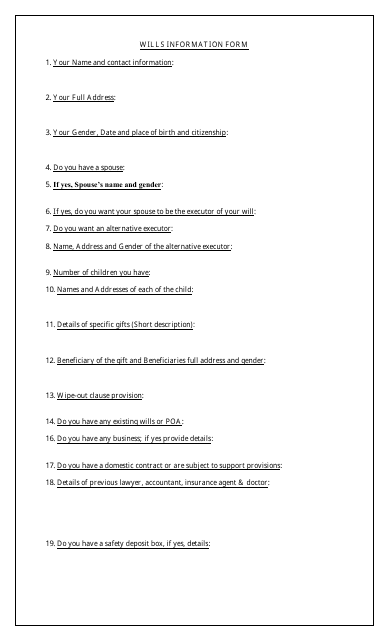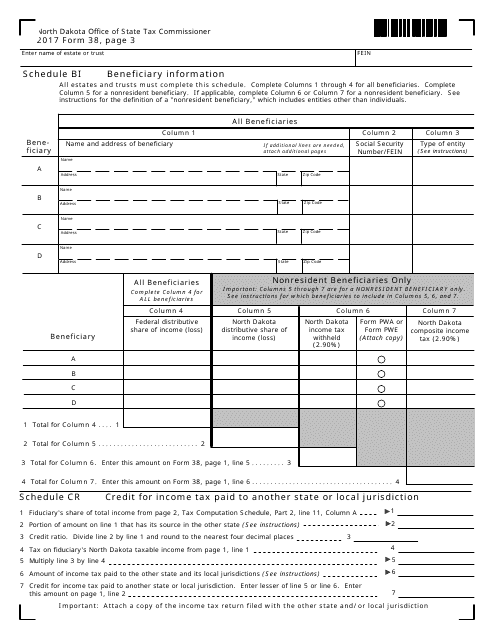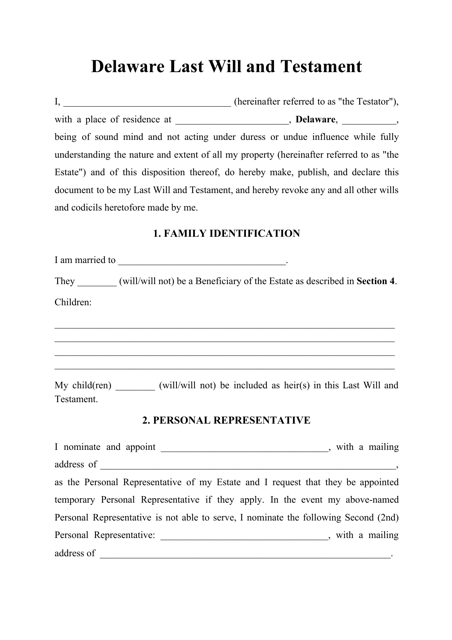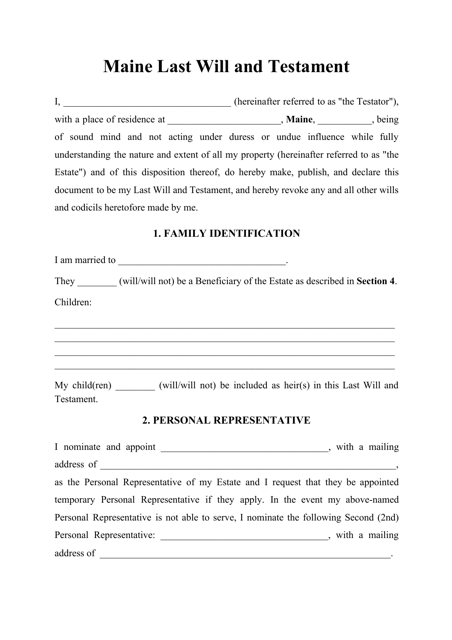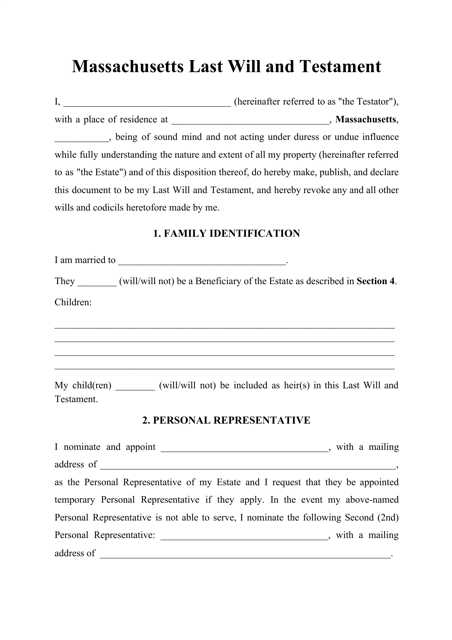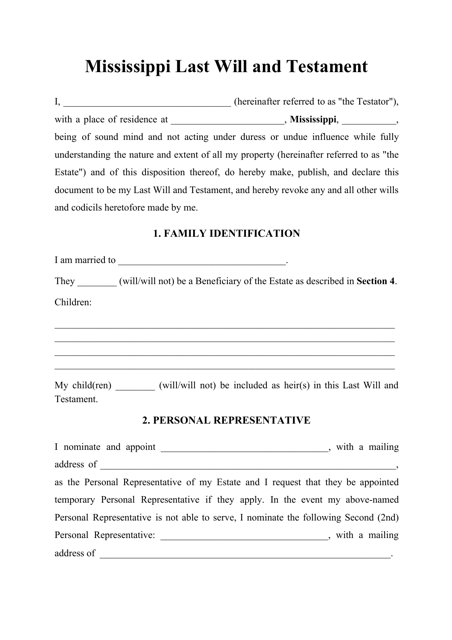Last Will and Testament Templates by State
A Last Will and Testament - commonly referred to as a Will, Last Will or Will and Testament - is a document created in order to layout the ways the assets of an individual will be distributed after their death. A signed and notarized final will and testament records the Testator’s decisions concerning the handling of their property and possessions while they still have the capacity to voice them.
A fillable free Last Will and Testament form for each of the 50 states is available for download and digital filing through the links below or you can create your own personalized form with our customizable template.
Last Will and Testament Templates by State
The interpretation of a will is subject to state law. A will is interpreted by the state court after the testator dies, and all the states have their own specifications and requirements. One of the most major differences is in the observation of the Community Property regime by a minority of states. A person may not use their will to disinherit their spouse who is entitled to at least a share of the testator’s property.
Besides, state law regulates how testators may revoke their wills. In some states, you may be able to revoke a particular part of your will by striking it out, but, in other states, it may be ignored or be interpreted as an attempt to revoke the entire will. In case a testator wishes to revoke or change their will, they have to contact an attorney or do some research into local law.
What Is a Last Will and Testament?
A Last Will and Testament (or simply a "Will") is a legal document created by an individual to express the way their real and personal property will be used after their death. It's is a way to define assets, appoint beneficiaries, and assign guardians for your children, and name an executor. The person who creates the Will is called a Testator. Beneficiaries are people who will be accepting your estate, they are in most cases family members or charity organizations. The document allows you to name an executor who will oversee the execution of your wishes. In addition to that, a Last Will and Testament gives you a chance to assign a guardian for your children. Making a will is a way to ensure that the Testator’s wishes will be followed and that the closest people will take care of them.
This document is a template for a questionnaire that helps gather the necessary information when creating a last will and testament.
In other words, in order to avoid the situation when your property will go to the state after your death, you need a document which will regulate where and how your estate will be distributed.
People usually make a will for the following reasons:
- Marriage or divorce;
- A serious change in the amount of owned property or money;
- Moving to another country or state;
- Death of an executor, trustee or guardian named in an old will;
- Birth of a new child;
- Adoption;
- Significant changes in tax laws.
How to Write a Will and Testament?
You can try creating your will following a number of simple rules. You will speed up the process of making a will if you collect the necessary information during the will preparation and before you sit down and start the interview. Make sure that your template contains all the legal language with your information and that it follows legal requirements of your state.
This document is a template worksheet for creating a Last Will and Testament. It helps individuals organize their wishes and distribute their assets after their death.
Here's what to include in a will and how to write it:
- Make a list of all your valuable assets including real and personal estates. Select a beneficiary for every item and inform these people. All the beneficiaries should be aware of your plans to financially prepare themselves for the transfer in the case of your death.
- Assign an executor. Select a trustworthy and educated person, such as a lawyer or a close assistant.
- Pick your beneficiaries. At this stage, you should understand if you plan to give all the estate to one person or split it among a number of people. A family member, a close friend or a charity can become a beneficiary. You may also want to think about what happens in the event of the death of one of the beneficiaries, whether the interest will go to their family or will be divided among the other beneficiaries.
- Make your will legal. Find out the witnessing requirements for your state. While you may not necessarily need a lawyer to make your will legal, your state may have specific signing requests so you may need to ask a lawyer about these details. Witnesses do not have to read your will, but they have to watch you sign it.
- Decide where to store your will. The original of the document requires a safe place. It may also be registered with the probate court at the option of the testator.
You can also leave instructions regarding your digital assets after you pass away. It may include information stored on your hard drive, laptop, and your online accounts. You may add social media, email accounts, blogs, and owned domains. Make sure you leave all the passwords and user names for an assigned person to carry out your instructions.
Last Will Related Forms
The two main forms related to the Last Will are the Living Will and Advance Directive. An Advance Directive is a legal document designed to specify a type of medical care that a person will be provided or won’t be provided with in the event of their inability to communicate at the end of their life. The oldest form of Advance Directive is a Living Will. It specifies or forbids some parts of the course of treatment healthcare, tubes, and other medical devices supplement. A Living Will can be very specific and include information about whether or not a person wants to undergo pain relief, antibiotics, hydration, feeding, etc.
Documents:
120
This document is a standardized form for creating a will in the state of California. It is prescribed by the California Probate Code, Section 6240.
This document is a template for a genealogical codicil to a last will and testament. It is used to make changes or additions to the will regarding family relationships and inheritances.
This document is a template worksheet for creating a Last Will and Testament. It helps individuals organize their wishes and distribute their assets after their death.
This document is a template for a questionnaire that helps gather the necessary information when creating a last will and testament.
This document is used for creating a legally binding will that outlines how a person's assets and property should be distributed after their death. It allows individuals to specify their wishes regarding guardianship of minor children, funeral arrangements, and the appointment of an executor.
This form is used to gather information needed for creating a will, including details about assets, beneficiaries, and executor preferences.
This Form is used for designating beneficiaries for the transfer of assets upon the death of the owner. It allows for the transfer of property without the need for probate.
This form is used for providing beneficiary information in North Dakota.
This document reports the death of a party involved in a legal matter in the state of Kansas. It is used to inform the court and other parties of the deceased's passing.
This document is used for creating a simple will in Montana. It allows individuals to specify how their assets and estate will be distributed after their death.
This Form is used for identifying the surviving spouse, children, next of kin, legatees, and devisees in the state of Ohio.
This type of document is used for recording an individual's preferred arrangements for the disposition of their remains after death.
This Form is used for filing a Small Estate Affidavit for Nonresident Decedents in Washington state. It allows nonresident individuals to settle the estate of a deceased person with a smaller value of assets.
This Form is used for creating a Last Will and Testament specifically for residents of Rhode Island. It is a legal document that allows you to outline your wishes regarding the distribution of your property and assets after your death.
This is a form that describes the terms for distribution of the deceased person's personal and residential property in the state of Alabama.
This document describes the terms for distribution of the deceased person's personal and residential property in the state of Alaska.
This Arizona-specific form lists the terms for distribution of the deceased person's property in the state.
Download this Arkansas-specific form that is used for determining how a person's possessions and property should be distributed after their death.
This is a document that is used in California to describe the distribution of the personal and residential property of the deceased.
This Colorado-specific form lists the terms and conditions for the distribution of the deceased person's property in the state.
Use this Connecticut-specific form that is created for determining how a person's possessions and property should be distributed after their death.
This form is used in the state of Delaware and serves the purpose of determining the distribution of the property of the deceased person.
Download this Florida-specific form if you need to create a document that would outline the terms and conditions for the distribution of the deceased person's possessions and property.
Download this Georgia-specific form if you need a document that determines the distribution of the deceased person's possessions and property.
This is a document that describes the terms for distribution of the deceased individual's personal and residential property in the state of Hawaii.
This document describes the conditions for the disposition of the deceased person's property (Estate) in the state of Kansas.
This Idaho-specific will template lists the terms for the disposal of a deceased person's possessions in the state.
Download this Maine-specific document that is used for defining how a person's possessions and property should be distributed after their death.
This is a form used in the state of Illinois to describe the distribution of the personal and residential property of the deceased.
This Indiana-specific form lists the provisions for the distribution of the deceased person's property and belongings.
Download this Iowa-specific form that is created for determining how a person's possessions will be distributed after their death.
This is a form that is used in the state of Louisiana and overlooks the distribution of the property of a deceased person.
Download this Kentucky-specific form if you need to create a document that would outline the terms and conditions for the distribution of the deceased person's possessions and property.
Download this form if you need a document that determines the distribution of the deceased person's possessions and property in the state of Michigan.
This document describes the terms for distribution of the deceased person's personal and residential property in the state of Maryland.
This is a document that is used in the state of Minnesota to describe the distribution of the property of the deceased.
Fill out and print this Massachusetts-specific form if you need a document that determines the distribution of a deceased person's Estate.
This form is used in the state of Mississippi and serves the purpose of determining the distribution of the property of the deceased person.
This document is used in Missouri for the purposes of describing the distribution of the personal and residential property of the deceased.
Use this Pennsylvania-specific form if you need a document that determines the distribution of the deceased person's possessions and property.






